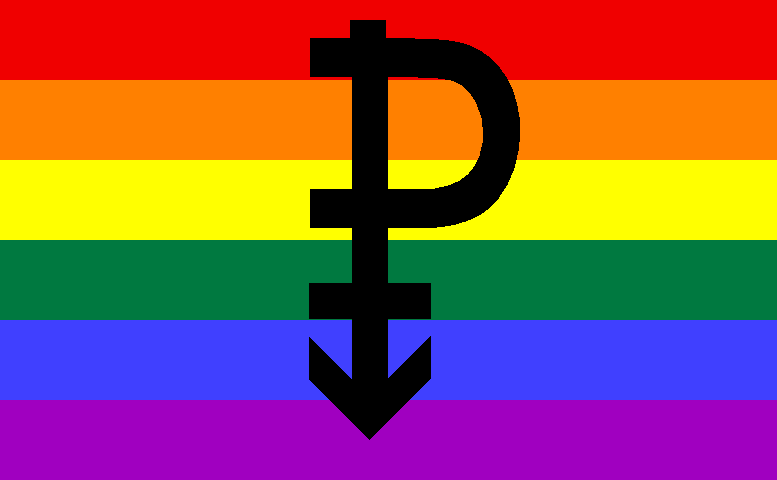Difference Between Omnisexual and Pansexual
Omnisexual is used to refer to people who are attracted to other people regardless of gender, but who are not gender blind. Pansexual is used to describe individuals who may be attracted to any person of any gender and who are gender blind.

What is Omnisexual?
Definition:
Omnisexual is a term used to describe individuals who are attracted to a person of any gender but they are not gender blind and thus are aware of the person’s gender.
Origin of the term omnisexual:
The use of this term is noted from as far back as 1959 when it was seen in some written work. It was also used in a book called “The Holy Barbarians” which was published in 1970. The term is much more in the spotlight today with much discussion on the use of this term being done on the internet in various chat groups and forums.
Features of omnisexual individuals:
People who identify themselves as omnisexual do recognize that different genders exist but this does not bother them. This means they can have romantic love with men or women or even people who do not believe in the binary classification of genders. An omnisex person may choose any partner regardless of gender, but is aware of that person’s gender.
The pride flag of omnisexual people:
The flag used for omnisexual individuals is a combination of pinks and blues. There are five horizontal bars made up of the colors, light pink, pink, light blue, blue and dark blue. The different gradations of pink and blue represent gradations in gender and sexuality of omnisexual people.

What is Pansexual?
Definition:
Pansexual is a term used to describe individuals who can be attracted to a person despite what the person’s gender is and the gender of the person is not noticed. In other words, pansexual people can also be called gender blind people since the do not really notice a person’s gender. Some consider the term to be useful for bisexual people but others take offense and therefore it is up to the individual person to decide if they want to be called pansexual or not.
Origin of the term pansexual:
The idea of pansexuality has been around for a long time, but the term was coined in 1970. However, pansexuality is not something that was really recognized openly until fairly recently. It is a term that is seen more often today and used sometimes by people to describe their sexual preference.
Features of pansexual individuals:
Studies have identified people who classify themselves as pansexual as generally being on the young side of adulthood, and that the term is attractive to nonheterosexual women. It also was found to be a term commonly used by people who do not have a cisgender. A pansexual person does not use gender at all when it comes to choosing a partner.
The pride flag of pansexual people:
The flag for pansexuality started to be seen on the internet from about 2010. The flag itself consists of a total of three horizontal bars that are of the colors blue, yellow and pink. The idea is that the blue is representative of males, pink is representative of females and the yellow is for people who are of fluid gender.
Difference between Omnisexual and Pansexual?
Definition
A person who considers themselves omnisexual is attracted to people who are of all genders and they are aware of the person’s gender. A person who considers themselves pansexual is attracted to people who are of all genders but they are totally unaware of the person’s gender.
Gender blind
An omnisexual individual is never considered or referred to as being a person who is also called gender blind. A pansexual individual is often and usually referred to as being a gender blind person.
Origin of the term
The term omnisexual was first noted in about 1959. The term pansexual was first noted in 1970.
Gender relevance
A person who is omnisexual may sometimes find that the gender of their chosen partner is relevant. A person who is pansexual never finds that gender is relevant in a partner.
Pride flag colors and bars
The omnisexual flag consists of five horizontal bars made up of light pink, pink, light blue, blue and dark blue. The pansexual flag consists of three colors, namely, pink, yellow and blue.
Table comparing Omnisexual and Pansexual

Summary of Omnisexual Vs. Pansexual
- Both of the terms omnisexual and pansexual can be used to describe a person who is attracted to more than one gender.
- The term pansexual refers also to a person who is gender blind and does not even notice the gender of a person or finds anything relevant about gender.
- The two terms, omnisexual and pansexual are both used more today than in the past.
- In both pansexual and omnisexual people, a partner may be someone who is of the same or a different gender.
- Difference Between Rumination and Regurgitation - June 13, 2024
- Difference Between Pyelectasis and Hydronephrosis - June 4, 2024
- Difference Between Cellulitis and Erysipelas - June 1, 2024
Search DifferenceBetween.net :
Leave a Response
References :
[0]Image credit: https://en.wikipedia.org/wiki/File:Pansexual_flag.PNG
[1]Image credit: https://en.wikipedia.org/wiki/Template_talk:Sexual_orientation/Archive_8#/media/File:Triangle_of_Sexuality.svg
[2]Belous, Christopher K., and Melissa L. Bauman. "What's in a name? Exploring pansexuality online." Journal of Bisexuality 17.1 (2017): 58-72.
[3]Callis, April Scarlette. "Bisexual, pansexual, queer: Non-binary identities and the sexual borderlands." Sexualities 17.1-2 (2014): 63-80.
[4]Morandini, James S., Alexander Blaszczynski, and Ilan Dar-Nimrod. "Who adopts queer and pansexual sexual identities?" The Journal of Sex Research 54.7 (2017): 911-922.
